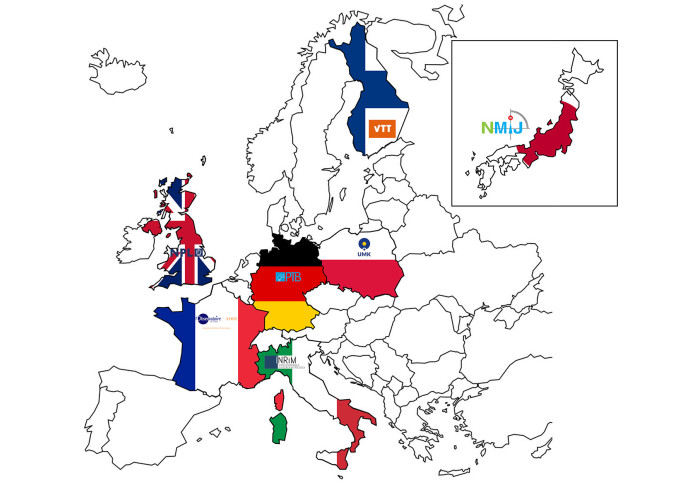An international campaign for optical clock frequency comparisons

The largest ever optical clock comparison campaign took place in March 2022 between 11 optical clocks in 7 different countries.
The SI second is currently defined in terms of an atomic microwave transition in caesium. Since their development, optical clocks based on optical transitions are outperforming caesium clocks by two orders of magnitude in the level of accuracy. It is therefore beneficial for the SI second to be redefined in terms of an optical frequency standard, such that the high uncertainty in its current realisation can be overcome. Before the redefinition can take place, and the new optical frequency standard can be chosen, it is an essential requirement for several optical clocks to gain confidence in their performance by comparing their frequencies with each other and demonstrating fractional agreements at the 10-18 level.
CQD student Alexandra Tofful has been working on the ytterbium ion optical clock at the National Physical Laboratory (NPL) during her PhD. This optical clock took part in a 1-month-long optical clock comparison campaign in March 2022, in which the frequencies of 11 optical clocks from 7 different countries (UK, France, Germany, Italy, Poland, Finland and Japan) were compared via optical fibre and Global navigation satellite system (GNSS) links. This was the biggest clock measurement campaign so far in terms of the number of participating clocks and labs, and it was a leap forward in robustness and automation of many of the clocks.
Alexandra focused on various aspects of the automation of the ytterbium optical clock experiment, such as routine calibration processes to minimise perturbations to the ion, and algorithms for continuously probing the clock transition. Several monitors and alerts were set up such that upon a failure mode, the problem could be immediately tackled by human intervention. These layers of automation targeted a higher optical clock uptime and allowed it to be validated hourly on the fly, as opposed to in post-processing after the campaign. In the future, the next step in terms of experimental automation will consist of the automatic recovery from any foreseeable failure mode, leading to a significant increase in clock uptime with unattended operation.
Article text (excluding photos or graphics) © Imperial College London.
Photos and graphics subject to third party copyright used with permission or © Imperial College London.
Reporter
Miranda Toora
Department of Materials